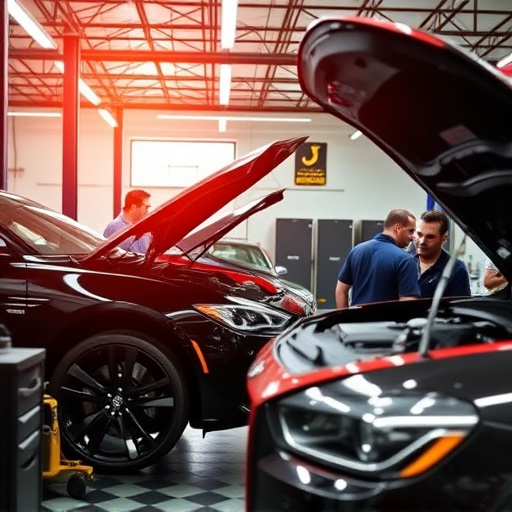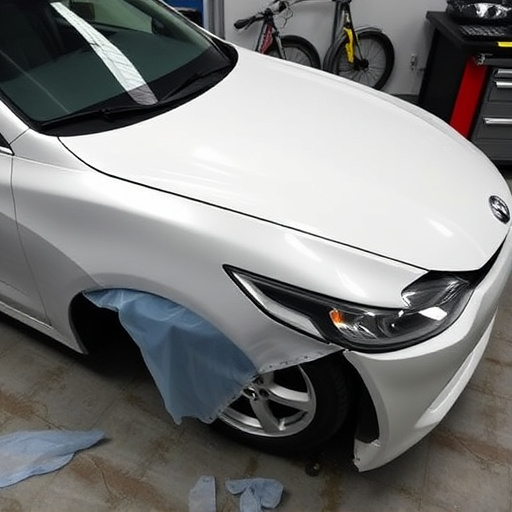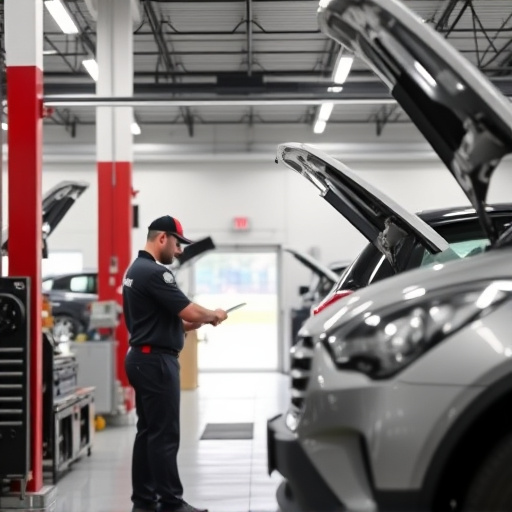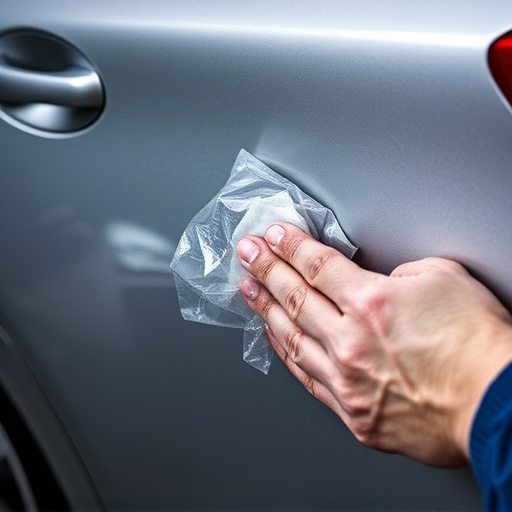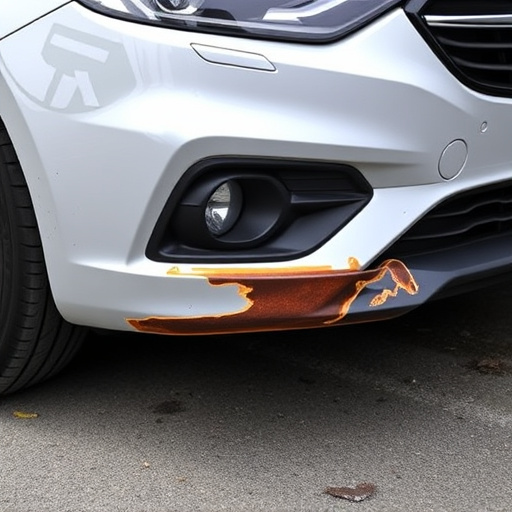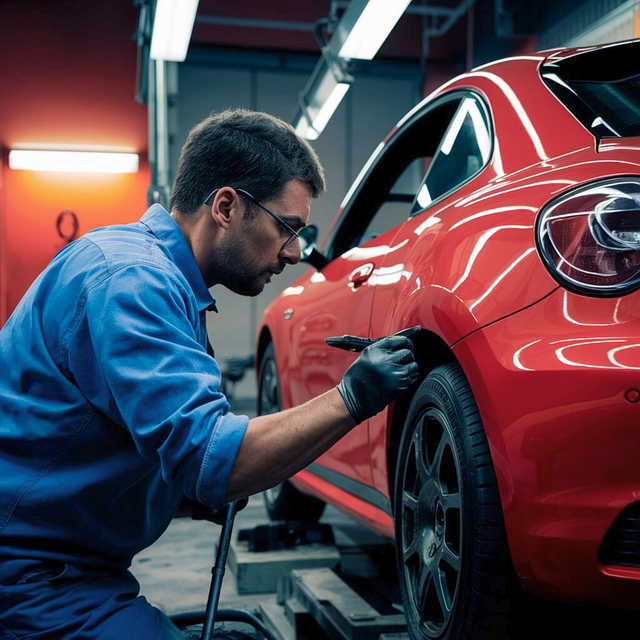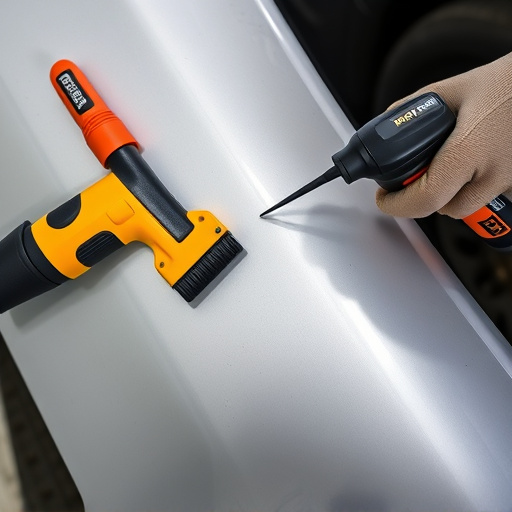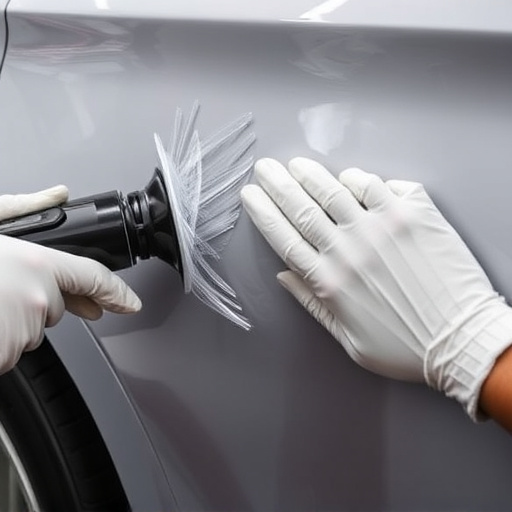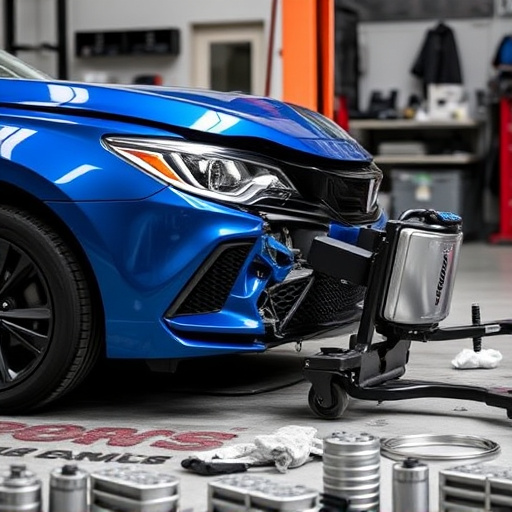In precision collision repair, a meticulous post-repair inspection ensures high-quality standards and customer satisfaction. Skilled technicians visually assess bodywork, paint, and mechanical systems, using advanced tools for accurate alignments and replacements according to manufacturer specs. Auto detailing guarantees structural integrity and aesthetics, while functional tests verify the quality of repairs, ensuring each vehicle meets precision collision repair standards before departure.
In the realm of precision collision repair, meticulous attention to detail is paramount. After intricate repairs, a post-repair inspection (PRI) serves as a crucial quality assurance step. This process ensures that vehicles return to their pre-accident condition, upholding high standards and customer satisfaction. Understanding and adhering to a comprehensive PRI protocol are essential for achieving flawless results in precision collision repair services.
- Understanding the Post-Repair Inspection Process
- Key Components of a Comprehensive Inspection
- Best Practices for Effective Post-Repair Quality Assurance
Understanding the Post-Repair Inspection Process

The post-repair inspection process is a critical step in precision collision repairs, ensuring that every detail is addressed and the vehicle meets the highest standards of quality. It involves a thorough examination of the car’s bodywork, paint job, mechanical systems, and overall condition after the repair work is completed. This meticulous evaluation is not just about identifying any visible defects but also confirming that all components have been correctly realigned and replaced, adhering to the manufacturer’s specifications.
In a precision collision repair shop, auto detailing plays a significant role in this process. Skilled technicians meticulously inspect every inch of the vehicle, including hard-to-reach areas, to ensure no damage or misalignment goes unnoticed. This rigorous scrutiny is essential in maintaining the integrity of the car’s structure and aesthetics, guaranteeing that the vehicle not only drives safely but also looks as good as new. The ultimate goal is customer satisfaction, ensuring that the collision repair shop delivers a superior finish on every project, fostering trust and reputation in the industry.
Key Components of a Comprehensive Inspection

A comprehensive post-repair inspection is a cornerstone of precision collision repair services. It involves meticulous evaluation of various components to ensure the vehicle’s structural integrity and aesthetic appeal are restored to their original state, or even improved upon. Key components include thorough visual inspections, utilizing advanced digital measuring tools for exact dimensions, and checking critical areas such as panels, frames, and suspension systems for any signs of misalignment or damage.
In addition to these practices common across the automotive collision repair industry, precision collision repair specialists often incorporate frame straightening techniques to address subtle yet significant misalignments that may have gone unnoticed during initial assessments. These meticulous procedures are carried out in a state-of-the-art auto body shop equipped with specialized equipment, enabling technicians to achieve unparalleled accuracy and quality in their repairs.
Best Practices for Effective Post-Repair Quality Assurance
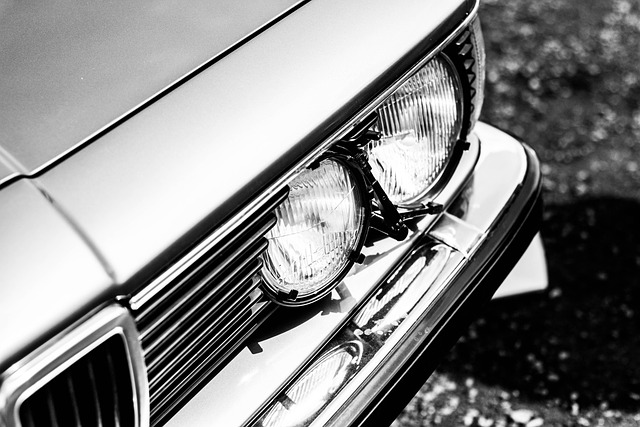
In the realm of precision collision repair, effective post-repair quality assurance is paramount to ensuring customer satisfaction and maintaining high standards. Best practices involve a meticulous inspection process that begins with a visual assessment of all repaired areas. Skilled technicians should verify that the repairs align perfectly with the vehicle’s original specifications, examining panel gaps, paint finish, and overall aesthetic integrity. Advanced tools like light meters and digital scanners can further refine this evaluation, measuring color accuracy and ensuring the car paint services match the vehicle’s unique shade.
Additionally, functional tests are crucial to assess the performance of fender repair and car restoration work. This includes checking for proper alignment, smooth operation of mechanical components, and the absence of any leaks or air pockets. By combining these rigorous inspection methods, collision repair facilities can guarantee that each vehicle leaves their shop in immaculate condition, living up to the expectations set by precision collision repair standards.
In conclusion, the post-repair inspection process in precision collision repairs is an indispensable step to ensure top-quality workmanship and customer satisfaction. By understanding the key components of a comprehensive inspection and adopting best practices for effective quality assurance, repair facilities can maintain high standards, reduce reworks, and build trust with their clients. This meticulous approach is essential for upholding the reputation of the precision collision repair industry as it navigates the evolving landscape of vehicle restoration.
